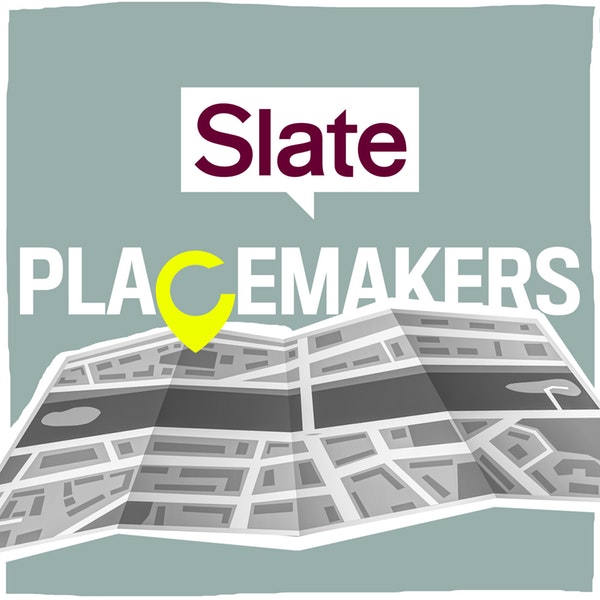

Chattanooga, Tennessee, has a lightning-fast, publicly run broadband network that has attracted a lot of tech talent to the city. But as the city builds an economy around technology, one thing is becoming apparent: There’s a gaping divide between those who are tech-savvy and those who aren’t. In some neighborhoods, as few as 1 in 5 households have an internet connection. Can Chattanooga bridge its digital divide?
Download episode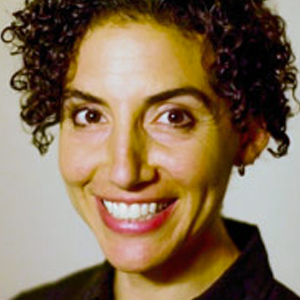
Rebecca Sheir has been a host and reporter on All Things Considered, Morning Edition, Marketplace, Here and Now, The Splendid Table, and the Alaska Public Radio Network. Follow her on Twitter.
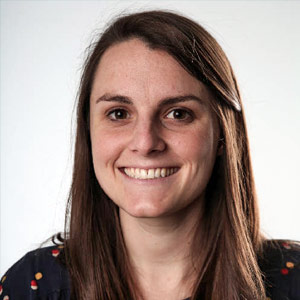
Mary Helen Montgomery is an independent journalist based in Chattanooga, Tennessee.
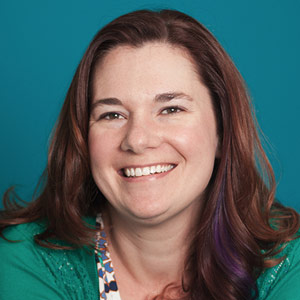
Kelly McCarthy is the program director ofTech Goes Home Chattanooga, a digital inclusion program serving Chattanooga, Tennessee, and the surrounding county.
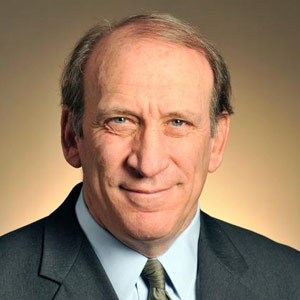
Telecommunications attorney Blair Levin is chief architect of the U.S. government’s National Broadband Plan, which aims to connect as many Americans to the internet as possible.
Rebecca Sheir: Yolander Bullard is having a breakthrough. She doesn’t use the internet often. But for the first time, she’s realizing how helpful it really is—she just used it to check her credit score.
Yolander Bullard: I knew you could do it online. I just never had done it because I didn’t know how. But, bam! So, I’m gonna find out a whole lotta stuff now. This is gonna just blow my mind completely out. This is—oooo, I’m gonna find out about the world! This is so neat!
Sheir: Bullard is a retired teacher’s aide in Chattanooga, Tennessee, and she’s sitting in a class for people who don’t feel comfortable with computers and the internet.
Class instructor: We’re going to compose an email. Your first email. To me, your instructor. So, flip to the last page of that handout you got, and it will tell you an introduction to your Gmail toolbar. Does everyone see that? Yep.
Sheir: On the surface, a tech literacy class might just seem like a feel-good community service. But it’s actually addressing a massive underlying issue in Chattanooga: the gaping divide between those who use the internet, and those who don’t.
I’m Rebecca Sheir. From Slate magazine, this is Placemakers: stories about the spaces we inhabit and the people who shape them.
You’ll find a lot of Yolander Bullards in Chattanooga and around the United States: people who find the internet too expensive, too hard to access, and, overall, just plain intimidating. And that’s become an issue that local economies have to reckon with.
As for Chattanooga’s economy, for years, it was all about manufacturing. And while the city does still have some major manufacturing going on, it’s trying to rebrand itself as a destination for tech companies. But as producer Mary Helen Montgomery tells us, the more tech-focused the city becomes, the more stark the divide is between the tech-savvy, and those left behind.
Mary Helen Montgomery: On the way into Chattanooga, there’s a billboard on the interstate that says, “You’ve Arrived! Gig City.” It’s referring to the fast internet speed available here. Drive downtown, and there are banners on the street marking the city’s so-called Innovation District. There are startup incubators—Co.Lab, the Business Development Center, and Lamp Post Group. And there are regular contests for the best new tech ideas. The people of Chattanooga hope that technology will lead the city to a bright future. But Kelly McCarthy doesn’t see everyone getting a piece of that, the way things are going.
Kelly McCarthy: The internet and technology is not a leveler, at the moment. In its ideal-est form it is, but it’s not in reality. So I’m trying in my very small way to help make that a reality.
Montgomery: McCarthy runs Tech Goes Home, a digital literacy program. She and her team are trying to help low-income students who struggle with schoolwork that requires online research, and adults who find it hard to function in a world that’s more dependent on the internet every day. The city of Chattanooga is the main funder for the program. This field McCarthy’s working in—digital equity—is a combination of all the things she’s passionate about: education. Technology. And social justice. When McCarthy was a teenager and young adult, she worked as a tutor.
McCarthy: And working with kids, and working with families of really diverse backgrounds, I think I started to realize that people are faced with very like concrete, real-world, different hurdles.
Montgomery: After college in Florida, McCarthy headed north—to Yale divinity school. She studied liberation theology—a movement in which the Bible is interpreted through the eyes of the poor. And she says she left divinity school with a different understanding of the world. McCarthy then took that understanding to technology. After grad school, McCarthy and her husband ran a web development firm that became known for focusing on accessibility.
McCarthy: Accessibility is about making it so that everyone can access the web. And that’s folks who may have visual impairment or who have lost their hearing or have some sort of color blindness. I came to really appreciate what we did, and I couldn’t ever see working in any other way. To me, it’s like, why would you build something that not everybody can actually access. It’s counter intuitive.
Montgomery: Now, as the program director at Tech Goes Home, McCarthy is trying to make sure everyone in Chattanooga—not just people with resources—can access the internet and know how to use it.
McCarthy: You know, the folks that are most affected by the sort of digital divide, which is pretty much who we work with primarily, are folks that are lower income, under $30,000 a year per household. Folks who are unemployed or underemployed. Those who may not speak English as their primary language. Those who have disabilities or who have family with disabilities. Folks who live in rural communities, those who are over 65. African Americans and Latinos are disproportionately affected. That’s a very large portion of Hamilton County.
Montgomery: Tech Goes Home is modeled after a program by the same name in Boston. This is how it works: students pay fifty dollars to attend the class. And, if they complete the 15-hour course, they get to take home a brand-new laptop. But for McCarthy, learning these skills isn’t just about improving individual lives. She thinks the health of the whole city is at stake. Chattanooga is one of the worst cities in the country for economic mobility. And the poverty rate here has been steadily growing for the last 15 years.
Montgomery: How do you think a city would be different—or how do you think Chattanooga would be different—if every single person was connected to the internet and had a basic level of tech literacy?
McCarthy: Honestly, I think our unemployment rate would be staggeringly low. I think our educational attainment would be much higher. There would be a leveling, to some extent, of the playing field. Which, you know, whether that would mean, OK everybody makes more money, or everybody moves out of public housing to a better situation. I don’t know necessarily that would translate, but I do think there would be at least more opportunities for Chattanoogans, for those who really want to take them.
Montgomery: It sounds like you think it would be a big difference.
McCarthy: I mean, I think it would. We’re talking about so many generational issues and factors of living situations and poverty that, like, you can’t possibly expect people to improve their lives, or to be even anywhere near their potential for themselves or their families if they’re sort of stuck, kind of in the Dark Ages, without the ability to do these things.
Montgomery: But even if everyone knew how to use a computer, a lot of people still couldn’t access the internet easily.
McCarthy: In Chattanooga—again, it’s really hard to estimate, but there are estimates—in some of our areas that are most underserved, in our urban core, the connectivity rates are under 20 percent.
Montgomery: That means that in some neighborhoods, only 1 in 5 homes has an internet connection. Paul Stovall hasn’t had internet for years.
Paul Stovall: So for a few years, I was a technophobe. I had technophobia. I would not mess with a computer. I didn’t understand them. I didn’t know how to make them function right.
Montgomery: Stovall is one of McCarthy’s students. He lives on the first floor of an apartment complex. It truly is the home of a technophobe. There are VHS tapes piled high and a desk with a monitor and keyboard—but no computer. The computer is with Stovall’s pastor, who’s trying to update it.
Stovall: But it’s an older system. It’s got Windows 98!
Montgomery: Stovall used to have an internet connection, but he can’t justify the cost anymore. He’s 65 years old and on a fixed income. After a decade on disability, Stovall has just started looking for a job. He has a college degree and used to work as a counselor for people with mental disabilities or addictions. And job searching has made him realize that he has to be more comfortable using the internet.
Stovall: It’s kind of humbling to me because at one time I just said, Oh fooey! I don’t need it. I’ve had to wake up and smell the coffee. This is the way of the world. So here I am.
Montgomery: He’s in the middle of a bind. Stovall has been waiting on extra income to get his internet connection back. But, without a connection at home, it’s going to be more difficult to get a job.
Comcast and AT&T are widely available in Chattanooga. And there’s another option—a municipal network, run through the city’s electric power board. The cheapest option is about $60 a month. There’s also a discounted service for poor families with children. It’s close to $30 a month, though, which is still too much for a lot of families.
In the city’s poorest ZIP codes, only 1 in 5 households subscribe to the public network. But, in the wealthiest ZIP codes, more than three times that many are connected. More people might be able to afford municipal broadband if they dropped the price, but there’s a law in Tennessee that says a public network can’t undercut the price that private companies charge. That’s why this public network isn’t allowed to subsidize the cost of internet for its low-income users. So, while the municipal broadband is faster than what the private companies offer, it isn’t cheaper.
Sheir: After the break, we’ll hear more about what the Internet means for people accessing it for the first time, and how important it’s becoming for cities and communities around the country. Plus, I’ll talk with someone who’s behind the big, national plan for making internet access affordable and universal by the year 2020
Sheir: From Slate magazine, it’s Placemakers. I’m Rebecca Sheir. If you’re listening to this podcast right now, chances are you’re pretty internet-savvy. Once you’re done with this, maybe you’ll open a browser window and check the weather forecast, or pay your electric bill. Perhaps you’ll dash off a few emails, or RSVP to yet another e-vite. And being this connected—this plugged-in—is probably a given, right? It’s a part of daily life. Using the internet is like using any other utility. But it’s not like that for everybody.
Before the break, we were hanging out in Chattanooga, where we met some folks who saw the internet as something distant, unattainable, even intimidating. And they were being given a chance to get more comfortable with technology, and maybe even join their city’s booming Internet economy. Mary Helen Montgomery picks up our story.
Montgomery: Paul Stovall wanted in from the moment he first heard about the classes at Tech Goes Home.
Stovall: I said, well, woo. Grab my saddle let me get on this pony, I’m ready to go!
Montgomery: Did it seem like something you had been waiting for?
Stovall: Yeah. It seemed like, this is an answer to a prayer. It’s an answer to a dream. Let me get rolling with this, and other blessings will fall in line. And so, Tech Goes Home is a part of my blessing that God has given me, so I’m very grateful.
Montgomery: Chattanooga is the kind of place where people can view a basic technology class in terms of prayer. And maybe it does take a certain kind of faith, to face this problem. There are huge differences in the lives of those who have internet access and those who don’t. The task of bringing everyone to the same level—it’s daunting. You have to believe progress is possible. Kelly McCarthy does.
McCarthy: I still get up every day saying, “OK, one more person in a class who knows how to do this, who then goes home to their family or their grandmother, or their aunt, or their uncle, or their kids. And they can teach someone something else.” Like, we’re moving the needle that much further.
Montgomery: Since McCarthy’s program started in early 2015, more than one thousand people have graduated. Almost three-quarters of the graduates say they have pursued more training online. But there’s still the vexing issue of affordability. If people like Paul Stovall can’t afford an Internet connection at home, that makes a lot of McCarthy’s work less effective.
McCarthy: There are so many competing factions and it always seems to get more and more complex as we go on. It’s a hard—I try to stay out of the politics of all that.
Montgomery: Tech Goes Home does help students learn about options available that are cheaper than the public network. AT&T, Comcast, Sprint, and T-Mobile, all offer a connection for about $10 a month to low-income people. That’s cheaper than the low-income rate on the municipal broadband. But the commercial telecom options may be slow or have data limits. And, their lowest rates aren’t guaranteed to last.
Still, McCarthy continues to do what she can for people who don’t use the Internet regularly. Their world is becoming more and more difficult to navigate. They can no longer sign up for public housing with pen and paper. They often can’t apply for jobs. McCarthy knows the easy thing for Chattanooga to do is to move on without them. But she doesn’t want to let Chattanooga do the easy thing.
McCarthy: On a very good day, I will say, “Yes! We can absolutely make it so that everyone knows how to do this. They have a computer. They have access.”
Montgomery: All they need is a way to afford it and the knowledge to use it.
Sheir: Chattanooga’s is among roughly 400 publicly run networks in the United States, and compared with all of them, it’s actually one of the biggest and fastest. That’s thanks to a federal stimulus grant the city received in 2010, for more than $100 million.
But as we just heard, for a large chunk of residents, this network still isn’t affordable, and these individuals may have to turn to commercial providers instead. To get some more insight about community networks, and their relationship with big telecoms, I reached out to Blair Levin. He served as chief of staff to the chairman of the Federal Communications Commission, and went on to develop the National Broadband Plan: That’s this blueprint for achieving universal, affordable internet access by the year 2020. Now he runs something called Gig U, which focuses on expanding high-speed networks.
When we met, I began by asking him: How do these community networks, such as Chattanooga’s, get set up in the first place?
Levin: A Chattanooga is something of a unique situation in which they built their network on top of their utility’s provider. That definitely improves the economics. Huntsville, Alabama, is doing the same thing, except there instead of offering the service themselves, they struck a deal with Google, so Google will offer the service on the Huntsville fiber. Eventually they will offer that same deal to other ISPs, internet service providers. That’s a different model for how you could do it. Most of what people think of municipal broadband services were really done in smaller communities in rural America where you had a community that said, “We don’t have a cable operator. Our local telephone company is not upgrading their network. We’re not a priority for them.”
If we want to be part of the global information economy, if we want young people to want to live here, if we want to be able to do certain things, either we can convince the telco to upgrade or we’re going to have to do it ourselves.
Sheir: You just touched on something I wanted to ask you about. What kind of boost do cities get, do towns get from setting up this kind of amenity?
Levin: Well, look, in the last large cities, you generally have a telephone provider and you have a cable provider. There’s generally speaking access everywhere. The quality of that access, the price of that access, one can debate all that. When there is an upgrade, there’s usually a significant boost. For example, there’s a lot of studies that show in Chattanooga, in Kansas City, and other cities that have been able to move from what we might think of as today’s internet to a future proof internet of a gigabyte where you have a lot of economic activity, a lot of new jobs, a lot of entrepreneurs move there. There are a lot of studies that show if you have a house that's connected to fiber and offers a gigabyte, it’s worth about $5,000 more than a similar situated house that doesn't have such access. If you have an apartment building that has access to the higher speeds, you can charge higher rent because consumers really value that.
In fact, if you look at the patterns of where people live and where the jobs are, it’s become even more true that cities offer the most attractive places to live. If you’re in rural America, the sense of isolation without internet is even greater. For some communities, it’s definitely a benefit. For other communities, it’s not a luxury. It's a must have if they want to stay part of modern society.
Sheir: A lot of big telecom companies aren’t exactly fans of these city-run networks.
Levin: Well, none of the telephone networks are fans of the municipally run networks. Some of their arguments in my opinion have some validity and some of their arguments have no validity. It's always like that in a policy process.
Sheir: Let’s start with the ones that you think do have validity.
Levin: Well, look, I always think the first thing I would say is whenever government spends money to be in a market where there is currently a lot of private investment, they should ask the question. I don’t take the position that some do which is government should never do that if we didn’t. If you take that position, you should would say government shouldn’t be in the education business. There should be no University of California. After all, there’s Stanford. I think we should agree that there are situations where government should invest even if there is private investment. Furthermore, I led the effort that resulted in the national broadband plan.
When we were looking at the numbers in 2009, it was very clear that certain communities wouldn’t get this without the government itself doing it and that’s where you see a lot of rural communities. On the other hand, when you get to big cities, I think that there are alternatives. Furthermore, I don’t believe any large city could attract the technical talent. I don’t believe the large cities can raise the risk capital. There’s a lot of risk capital which is very different than what the kind of capital they raised for streets and schools, things like that. Also it’s a real scale business. There’s a reason why the companies that do best have national footprints. Those are all difficult problems particularly in large cities.
Sheir: This is something you briefly mentioned earlier, but I want you to expand on it. Some people argue that these days internet access should be more like a utility, not so much a luxury, it’s that important. Where do you come down on that question?
Levin: Well, I think it is critical that the United States government have a policy to get affordable, abundant bandwidth everywhere. I think it’s critical that we have a policy that gets everybody on. I think it’s critical that we have a series of policies to use that platform to better deliver public goods and services. Those who argue for utility are making my argument an additional argument. The additional argument that they’re making is and therefore the government itself should be the provider of the service.
Sheir: Blair Levin suggests that if we could start from scratch in the United States, the government should lay fiber everywhere, just like streets, and make it completely open-access.
But of course it’s far too late for that. So for now, the local municipalities and the big telecoms? They’ll just have to duke it out.
Our story from Chattanooga today was reported by Mary Helen Montgomery. Placemakers is a production of Slate magazine and is produced by Mia Lobel, Dianna Douglas, and Michael Vuolo, and edited by Julia Barton. Our researcher is Matthew Schwartz. Eric Shimelonis does our mixing and musical scoring. Our theme was composed by Robin Hilton. Steve Lickteig is our executive producer. I’m Rebecca Sheir.
For more information about today’s show and other episodes of Placemakers, go to Slate.com/placemakers. You can drop us a line at placemakers@slate.com. You can follow us on Twitter; our handle is@slateplacemaker. And if you like what you’re hearing, please give us a review or rating on iTunes. It really does help.
Our Placemakers journey continues for a few more months. We’ll be heading all over the United States, where we’ll do some underground squatting in Oakland, California:
Man: A lot of people thought that what I was trying to do was totally crazy.
Sheir: We’ll meet refugee resettlers in Missoula, Montana:
Woman: People are just scared. They’re scared of the unknown.
Sheir: And we’ll hear from the guy who set out to make the tiny hamlet of Greensburg, Kansas, the greenest town in the nation.
Man: There’s still people today probably will tell ya: “Go fast, build it quick, don’t mess with building permits, don’t mess with green. Just get it built up and get your life back normal.” Well, guess what? Life was never gonna be normal again.
Sheir: And that’s just a taste of what we have in store. Now, to bring you these stories, to introduce you to these placemakers, it takes a whole lot of, love, first of all. And resources.
As you know Placemakers is made possible by J-P-Morgan-Chase, and they have put together three stories focusing on what local nonprofit partners are doing to shape towns and cities. Next week they’ll present the first of those stories... from Motor City itself: Detroit, Michigan.
After that, we’ll be back with a brand new episode of our own. So stay tuned!